Review: Whyte Elyte 150 Works - 'One of the Best Handling E-Bikes'
The niche of "SL" e-bikes continues to grow in popularity, and it's easy to see why. They offer a ride feel that's very similar to a regular mountain bike on the descents while still providing a boost on the way up. New lightweight motors from Fazua, TQ, and Brose have driven this trend, but now Bosch has thrown its hat in the ring with their new SX motor, which claims 600 Watts of peak power while weighing just 2 kg. Impressive numbers.
Whyte have taken full advantage of this with their Elyte. By building the whole frame out of carbon fiber, a material they haven't used for a few years, Whyte claim the lightest model weighs as little as 16.4kg (36.1 lb). That's pretty impressive for a bike with up to 600 W of power and a 400 Wh battery.
Whyte have taken full advantage of this with their Elyte. By building the whole frame out of carbon fiber, a material they haven't used for a few years, Whyte claim the lightest model weighs as little as 16.4kg (36.1 lb). That's pretty impressive for a bike with up to 600 W of power and a 400 Wh battery.
Whyte Elyte 150 Details
• Full-carbon frame
• Wheel size: 29" front & rear
• Travel: 142mm rear /150mm front
• Bosch SX motor, 55 Nm, 600W peak
• 400 Wh battery (+ 250 Wh range extender)
• Head tube angle: 64-64.6°
• Reach: 435, 460, 485, 510mm
• Chainstay: 450mm
• Weight: 19.5 kg / 43 lb (actual, XL)
• 4-year frame warranty, lifetime warranty on bearings
• Pricing: £9,999 (includes range extender)
• whytebikes.com
• Full-carbon frame
• Wheel size: 29" front & rear
• Travel: 142mm rear /150mm front
• Bosch SX motor, 55 Nm, 600W peak
• 400 Wh battery (+ 250 Wh range extender)
• Head tube angle: 64-64.6°
• Reach: 435, 460, 485, 510mm
• Chainstay: 450mm
• Weight: 19.5 kg / 43 lb (actual, XL)
• 4-year frame warranty, lifetime warranty on bearings
• Pricing: £9,999 (includes range extender)
• whytebikes.com
The Elyte is available in two main flavors: the Elyte 140 and 150. Confusingly, the name refers to the fork travel, so the former has a 140 mm fork and 135 mm of rear travel, while the latter has 150 mm up front and 142 mm at the rear. Both use the same frame, just different forks and shocks. The 140 probably exists to show off the most impressive headline weight, with light-duty parts and a hefty price tag. The 150 makes the most sense thanks to the extra travel, more robust components and lower price, so that's what we've tested.
Frame Details
The Elyte is designed and built around the Bosch SX motor. It provides a modest 55 Nm of torque, but if you spin your legs fast enough it boasts a 600 W peak power output, which is up there with "full-power" motors like Shimano's EP801. Torque is the rotational force the motor applies to the chainring, while power is the torque multiplied by the rotational speed (cadence). It's the power that dictates how fast you can ride up a hill, not the torque. So, to get so much power with relatively little torque, you have to spin quite fast. You won't get anywhere near the peak power unless you use a higher cadence than most riders are used to. Cleverly, Whyte have specced stubby 155 mm cranks in all sizes, which naturally result in a higher cadence as well as extra ground clearance.
A 400 Wh internal battery sits inside the enclosed downtube and isn't designed to be removed in a hurry. A 250Wh Bosch Powermore range extender is included with the top-spec model (tested) and can be fitted to the bottle bosses nearest the motor, giving a total of 650 Wh of energy, putting it in line with many full-power e-bikes. The range extender weighs 1.5 kg, bringing the total weight to 21 kg. When riding, the range extender and main battery drain simultaneously and maintain a similar percentage, so you can't drop off the range extender once it's spent leaving you with a full main battery. The long, straight downtube means a second bottle can be fitted in front of the range extender. Whyte say a 450 ml Fidlock bottle will fit in sizes M-XL, but I was able to fit a regular 750 ml bottle in my Xl test bike. If you're planning to exert yourself more than the motor, you can mount two bottles instead.
The electronic derailleur is powered by its own AXS battery rather than a wire from the main battery. AXS derailleurs powered by the main battery make sense in theory; proponents say there's a reserve in the main battery for a few hundred shifts after the motor "dies". However, Whyte say they decided to have a separate battery for the derailleur because this reserve doesn't always work, leaving you suddenly without power or gears. And with a bike like this, you could keep riding for a long time without assistance so long as the gears work. The downside is you'll need to charge the derailleur battery every few rides.
The frame features cable ports for "traditional" internal cable routing, but the headset has room to run the cables through the headset if you prefer - I can recommend a good psychiatrist if that's you. There's plenty of rubberized frame protection plus an aluminum skid plate under the motor, which gets some use thanks to the low-hanging motor position, which is designed to keep the center of gravity as low as possible. The unidirectional carbon frame is category-four rated, which loosely means it's designed for enduro-style riding but not bike parks. It's only tested for forks up to 150 mm, so you can't fit anything longer without voiding the warranty.
The Elyte is designed and built around the Bosch SX motor. It provides a modest 55 Nm of torque, but if you spin your legs fast enough it boasts a 600 W peak power output, which is up there with "full-power" motors like Shimano's EP801. Torque is the rotational force the motor applies to the chainring, while power is the torque multiplied by the rotational speed (cadence). It's the power that dictates how fast you can ride up a hill, not the torque. So, to get so much power with relatively little torque, you have to spin quite fast. You won't get anywhere near the peak power unless you use a higher cadence than most riders are used to. Cleverly, Whyte have specced stubby 155 mm cranks in all sizes, which naturally result in a higher cadence as well as extra ground clearance.
A 400 Wh internal battery sits inside the enclosed downtube and isn't designed to be removed in a hurry. A 250Wh Bosch Powermore range extender is included with the top-spec model (tested) and can be fitted to the bottle bosses nearest the motor, giving a total of 650 Wh of energy, putting it in line with many full-power e-bikes. The range extender weighs 1.5 kg, bringing the total weight to 21 kg. When riding, the range extender and main battery drain simultaneously and maintain a similar percentage, so you can't drop off the range extender once it's spent leaving you with a full main battery. The long, straight downtube means a second bottle can be fitted in front of the range extender. Whyte say a 450 ml Fidlock bottle will fit in sizes M-XL, but I was able to fit a regular 750 ml bottle in my Xl test bike. If you're planning to exert yourself more than the motor, you can mount two bottles instead.
The electronic derailleur is powered by its own AXS battery rather than a wire from the main battery. AXS derailleurs powered by the main battery make sense in theory; proponents say there's a reserve in the main battery for a few hundred shifts after the motor "dies". However, Whyte say they decided to have a separate battery for the derailleur because this reserve doesn't always work, leaving you suddenly without power or gears. And with a bike like this, you could keep riding for a long time without assistance so long as the gears work. The downside is you'll need to charge the derailleur battery every few rides.
The frame features cable ports for "traditional" internal cable routing, but the headset has room to run the cables through the headset if you prefer - I can recommend a good psychiatrist if that's you. There's plenty of rubberized frame protection plus an aluminum skid plate under the motor, which gets some use thanks to the low-hanging motor position, which is designed to keep the center of gravity as low as possible. The unidirectional carbon frame is category-four rated, which loosely means it's designed for enduro-style riding but not bike parks. It's only tested for forks up to 150 mm, so you can't fit anything longer without voiding the warranty.
Suspension Design
A classic Horst-link layout with a clevis-driven shock is familiar from other Whyte bikes. This time, the shock eyelet contains offset bushing hardware that can adjust the bottom bracket height by 8 mm and the head angle by half a degree. It's probably a simpler and lighter solution compared to a dedicated flip chip, and there is the option to install regular hardware to get the geometry in the middle.
Anti-squat, which determines how firm and efficient the suspension feels under power, is pretty average for an e-bike, with around 100% at sag. That should mean minimal pedal bob without the suspension becoming unresponsive when pedalling hard. The leverage curve is moderately progressive throughout, so it should be supple at the start of the stroke and supportive towards the end. Whyte say it plays nicely with coil shocks.
Geometry & Sizing
Whyte have always favoured low bottom bracket heights and the Elyte is no exception. I measured the BB on my test bike at 335 mm off the ground in the high setting and 326 mm in the low. Even for a short-travel bike, that's very low indeed. The 155 mm crank arms will give up to 15 mm more pedalling clearance than "standard" 170 mm arms. My measurements also come out slacker than claimed, with a head angle of 64 or 63.5-degrees depending on the setting, and an effective seat angle measuring 76.1 or 75.6-degrees at my pedalling height. It's normal for bikes to measure up slightly differently from the geometry chart, which is why I take these measurements.
Whyte have always favoured low bottom bracket heights and the Elyte is no exception. I measured the BB on my test bike at 335 mm off the ground in the high setting and 326 mm in the low. Even for a short-travel bike, that's very low indeed. The 155 mm crank arms will give up to 15 mm more pedalling clearance than "standard" 170 mm arms. My measurements also come out slacker than claimed, with a head angle of 64 or 63.5-degrees depending on the setting, and an effective seat angle measuring 76.1 or 75.6-degrees at my pedalling height. It's normal for bikes to measure up slightly differently from the geometry chart, which is why I take these measurements.
| Specifications | ||
| Release Date | 2024 | |
| Price | $12663 | |
| Travel | 142 mm | |
| Rear Shock | Fox Float X Factory EVOL, lockout, 210mmx50mm | |
| Fork | Fox 36 Factory, Grip2, 150 mm | |
| Headset | FSA No. 69/56/SRS | |
| Cassette | SRAM XS 1295, T-Type, 10-52T, | |
| Crankarms | Hope E-Bike Cranks, 155mm length, 36T chainring | |
| Chainguide | Integrated top guide | |
| Bottom Bracket | Bosch Performance Line SX, 55 Nm | |
| Pedals | N/A | |
| Rear Derailleur | SRAM XO T-Type AXS, 12 speed | |
| Chain | SRAM XO T-Type, 12 speed | |
| Front Derailleur | N/A | |
| Shifter Pods | SRAM AXS Pod, right, MMX | |
| Handlebar | Race Face Next R Carbon, 20mm rise, 35mm bore, 800mm width | |
| Stem | Whyte Trail, 32mm length | |
| Grips | Whyte Enduro lock-on | |
| Brakes | Hope Tech4 V4, 200 mm floating rotors | |
| Hubs | Hope Pro 5, six bolt, 32h rear, 28h front | |
| Spokes | DT Swiss New Champion 2.0mm, brass nipples | |
| Rim | Whyte TeXtreme carbon Trail rims | |
| Tires | Maxxis Minion DHF, EXO TR MaxxGripp 29in x 2.5in front; Maxxis Dissector, EXO+ TR MaxxTerra 29in x 2.4in, rear | |
| Seat | Fizik Terra Aidon, 145mm wide | |
| Seatpost | Whyte drop.it II Adjust, 30.9mm (S/M 140-170mm travel; L/XL 170-200mm travel), MMX Paddle remote lever | |
Test Bike Setup
I found the suspension easy to set up on the Elyte, sticking with 30% sag, compression generally open and rebound just on the faster side of halfway. The Fox 36 Grip 2 is familiar to me, so I set it to 95 psi with compression and rebound both a few clicks from fully open.
I did find the bar height way too low on my Xl test bike, so I soon swapped out the 20 mm rise handlebar for a 35 mm rise OneUp handlebar along with a 40 mm stem and ODI grips. This made it much easier to move the bike around and feel comfortable riding hard.
Tire pressures hovered around 22-23 psi front and 26-27 psi rear.
I did find the bar height way too low on my Xl test bike, so I soon swapped out the 20 mm rise handlebar for a 35 mm rise OneUp handlebar along with a 40 mm stem and ODI grips. This made it much easier to move the bike around and feel comfortable riding hard.
Tire pressures hovered around 22-23 psi front and 26-27 psi rear.
Testing Info
Testing took place in the Tweed Valley, Scotland, at Glentress, Cademuir and Innerleithen. The Whyte felt at home on all but the most bike-parky features of Innerleithen's Matador trail, but was in its element on the tight, steep tech of the Golfy.
Climbing
The Bosch SX motor likes to spin fast, so you do find yourself consciously increasing the cadence to get the most support. The 155 mm cranks make it easier to do this, as shorter cranks lend themselves to higher RPM due to the smaller pedal circle circumference. If you pedal fast, there is plenty of power available when zipping up steep fire roads, even enough to keep up with full-power bikes at a push.
But on technical climbs, the SX motor has noticeably less oomph when the cadence drops, making it hard to regain momentum when you lose it. When the trail kicks up in a crux move and speeds plummet, leaving you struggling to turn the cranks over, the motor seems to stall, and provides no assistance until the cadence builds to a certain level, which is less than ideal. Also, the seat angle is a little too slack with the flip chip in the high setting and even slacker in the low position (which I preferred for descending). This makes it harder to maintain a good weight distribution on steep climbs. Despite the short cranks, pedal strikes were occasionally an issue in the low mode. Throw in the Dissector rear tire and the Elyte isn't the best for clearing technical climbs.
On the other hand, the moderate weight and fast-rolling tires make it impressively efficient. I managed around 1,000 m of climbing from the 400 Wh battery with maximum assistance in winter conditions, or around 1,600 m with the range extender. Even with the motor off, it's surprisingly easy to keep up with regular bikes until the gradient gets to the point where the 36-tooth chainring becomes limiting.
The Bosch SX motor likes to spin fast, so you do find yourself consciously increasing the cadence to get the most support. The 155 mm cranks make it easier to do this, as shorter cranks lend themselves to higher RPM due to the smaller pedal circle circumference. If you pedal fast, there is plenty of power available when zipping up steep fire roads, even enough to keep up with full-power bikes at a push.
But on technical climbs, the SX motor has noticeably less oomph when the cadence drops, making it hard to regain momentum when you lose it. When the trail kicks up in a crux move and speeds plummet, leaving you struggling to turn the cranks over, the motor seems to stall, and provides no assistance until the cadence builds to a certain level, which is less than ideal. Also, the seat angle is a little too slack with the flip chip in the high setting and even slacker in the low position (which I preferred for descending). This makes it harder to maintain a good weight distribution on steep climbs. Despite the short cranks, pedal strikes were occasionally an issue in the low mode. Throw in the Dissector rear tire and the Elyte isn't the best for clearing technical climbs.
On the other hand, the moderate weight and fast-rolling tires make it impressively efficient. I managed around 1,000 m of climbing from the 400 Wh battery with maximum assistance in winter conditions, or around 1,600 m with the range extender. Even with the motor off, it's surprisingly easy to keep up with regular bikes until the gradient gets to the point where the 36-tooth chainring becomes limiting.
Descending
On the first ride with the stock low-rise bar, I felt like a passenger. I found it hard to push the front tire down into holes to maintain grip and to lift it up and over obstacles. Swapping to a higher bar made all the difference. Despite the longish chainstays, I found it remarkably easy to lift the front wheel and bunnyhop over roots or fallen trees, while also being able to maintain consistent pressure on the front tire through turns. One of my local trails has a knee-high boulder on a moderate climb, which I find very hard to get enough speed to clear on an unassisted bike, and impossible to get over on a 25 kg full-fat ebike. The Whyte hit a sweet spot with plenty of power to build speed, without feeling stuck to the ground, allowing me to clear this familiar obstacle easier than any other bike I've tested. The point is, the Elyte has comparable peak power to a full-fat e-bike while being almost as easy to manual and hop as a regular enduro bike (just not with the stock handlebar).
I started testing in the high setting which is how the bike ships. In this setting, the bike is far from high or steep, but on occasion, I did find the steering less predictable than I'd like when entering sharp, complicated turns. I was reluctant to try the low setting because of the already low bottom bracket and relatively slack seat tube, but I'm glad I did. This took the handling to another level on the steeps. The lower bottom bracket and slacker head angle make it easier to chuck it into awkward turns and carve around them with confidence. I did scrape the frame's skid plate on one awkward rock step, but the short cranks mean this setting isn't ridiculous in terms of ground clearance. The downside of the low setting is mostly on the climbs and mostly in the seat angle, but the grin-inducing stability and "chuckability" on steep downhill tech are worth it in my view. Whyte's lead engineer told me he runs a neutral bushing for in-between geometry, which might be a good compromise for all-round riding.
The suspension is remarkably supple on small and medium bumps, fluttering over the chatter amazingly well for the suspension travel. This is perhaps due to the shock tune, which Whyte say has minimal preload on the compression valving and a linear rebound tune. It does lose ground to longer-travel bikes on big hits and drops, where the limits of the suspension travel can be felt. It's a shame that the frame is not officially rated to take a 160 mm fork because that could deliver a slacker head angle without the bottom bracket being quite so low (perhaps in with a neutral shock bushing) while also giving a little more cushioning in the front.
Nevertheless, the Elyte is one of the best-handling e-bikes out there. It's stable on the steeps, maneuverable through tight turns and doesn't mind being picked up over obstacles and chucked about on the trail.
What's the Best Value?
The Fox suspension and Hope brakes were some of the key components of the Works model, so it's hard to recommend downgrading to the SRAM-equipped RSX model with its inline shock and Code Bronze brakes. It may be 20% cheaper, but the RSX model doesn't include a Range extender (and you're going to want one of those if you're the type of person who enjoys fun).
How Does It Compare?
The Bosch CX motor might be in the same SL category as the TQ’s HPR50 found on the [PI=https://www.pinkbike.com/news/first-ride-scott-voltage-the-electric-genius.html]Scott Volatge[/PI], but they are very different to ride. Although the Bosch lacks low-cadence torque, it’s way more powerful, to the extent that swapping to the Scott feels a bit like going back to a regular mountain bike. The Scott’s smaller battery means the range is similar if not slightly less, but on my scales, it’s only 0.25 kg lighter.
The Voltage has a better climbing position for technical climbs, but on the descents, I preferred the Whyte. With its lower BB, shorter cranks, shorter stem and slacker head tube, it felt more intuitive and confident on steep and technical trails. The extra travel on the Scott is handy when things get gnarly, but I think the Whyte’s rear suspension and shock tune are better judged, with similar suppleness and more predictable support. Despite generally preferring longer-travel e-bikes, I'd much rather have the Whyte.
Technical Report
Hope Tech 4 V4 brakes: I’ve put a lot of miles on two sets Hope’s most powerful stoppers, and they are a big improvement over the Tech 3s. There’s plenty of power and an intuitively linear lever feel that makes it easier to judge braking force on slippery descents. But both sets had a lever feel/free-stroke that changed slightly over the test period, going from ultra-sharp to having a little too much free-stroke for my liking even with the adjuster wound fully in. They're still solid brakes, but I’m not blown away by the Tech 4s as some journalists are - I don’t think they’re as solid and consistent as a Hayes Dominion or a SRAM Code with sintered pads and a HS2 rotor.
155 mm cranks: These should be standard on electric bikes.
SRAM Transmission: I’m not convinced Transmission is necessary or worth the premium on a mechanical bike, but on an eMTB the decisive shifting is appreciated. It didn’t skip a beat throughout testing - except when I forgot to charge it.
Pros
+ Confident yet agile handling especially on steep and tight descents
+ Impressive suspension performance
+ Bosch SX motor gives powerful support and range with the included extender
+ Fits a water bottle and a range extender
Cons
- Not the best for steep and technical climbs
- Stock cockpit is too low for the XL size
- It's ten grand
Author Info:
Must Read This Week
Sign Up for the Pinkbike Newsletter - All the Biggest, Most Interesting Stories in your Inbox
PB Newsletter Signup
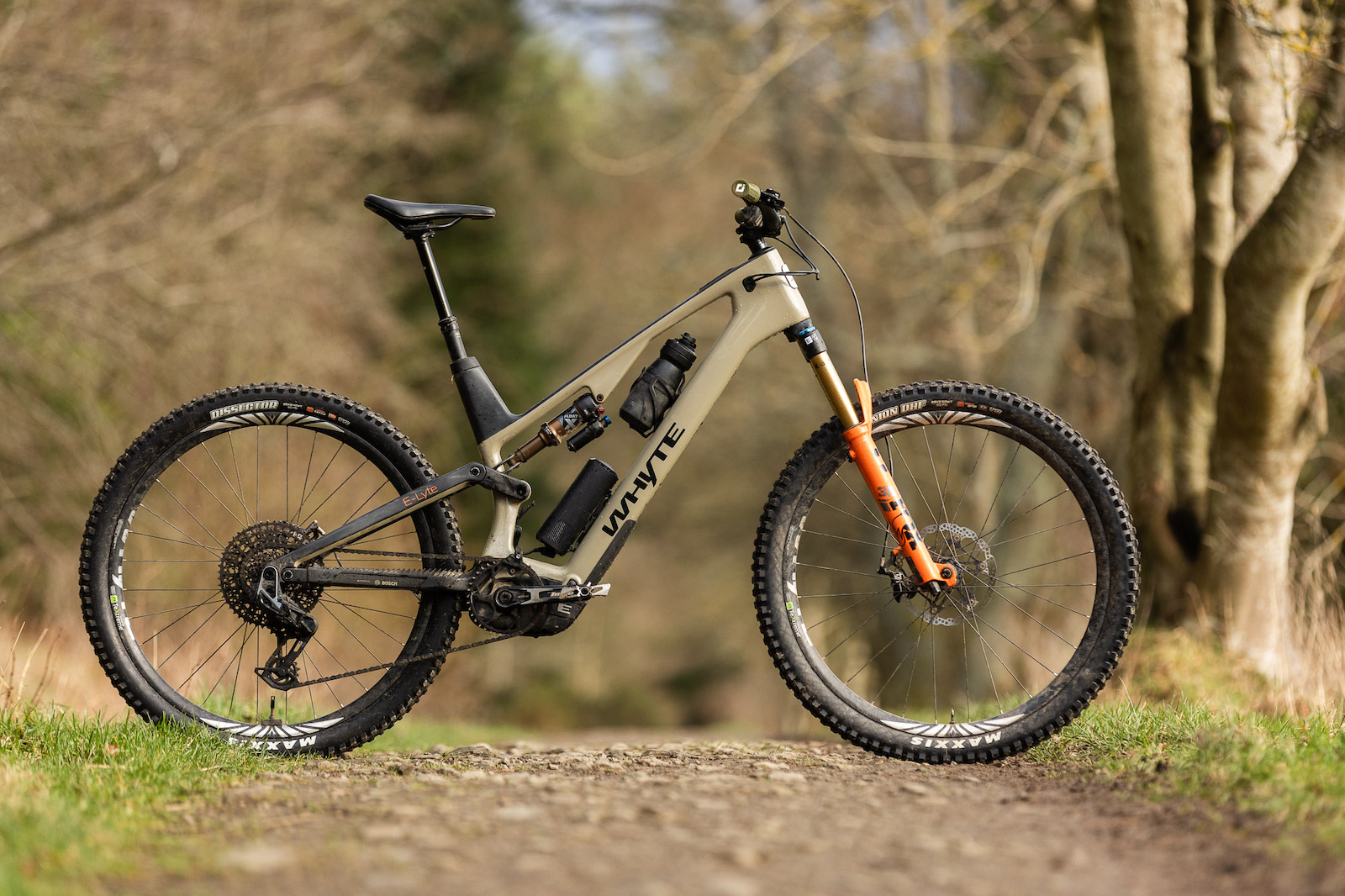





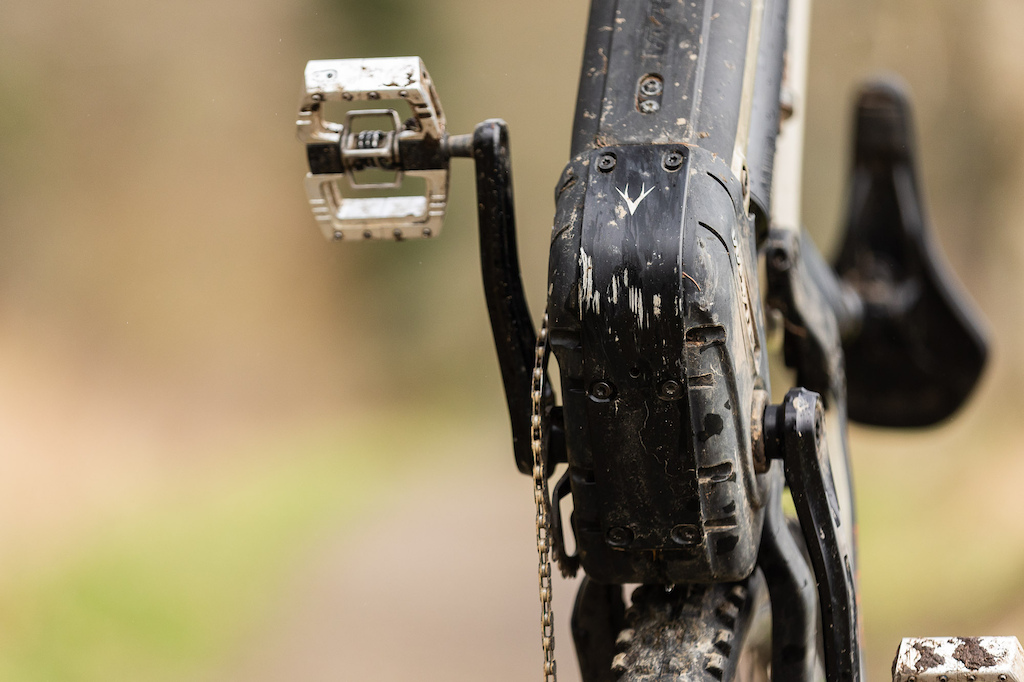


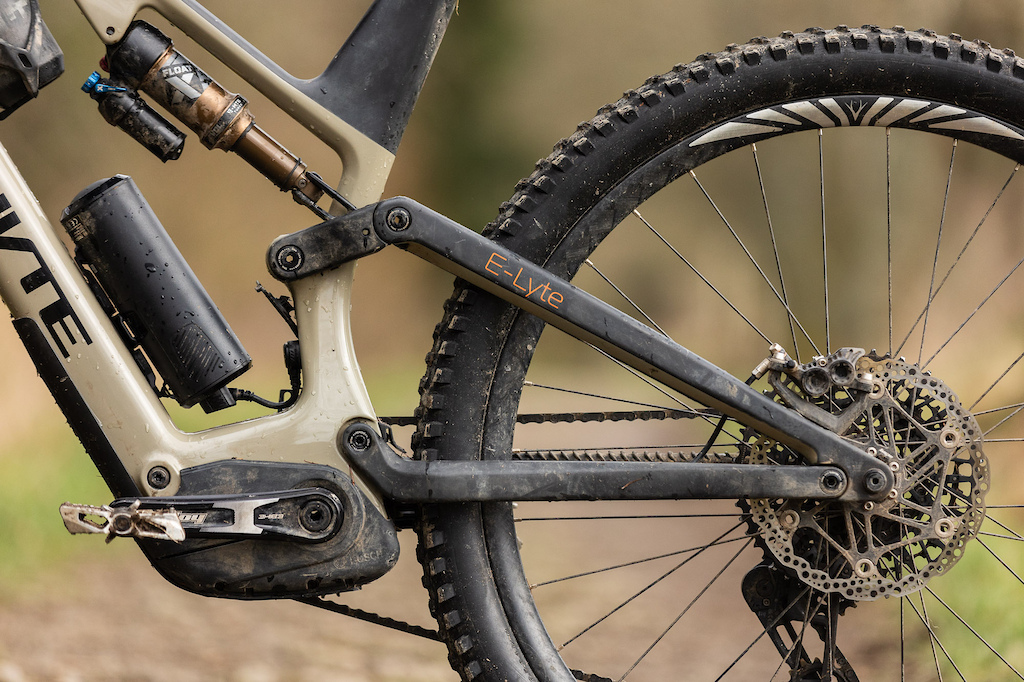
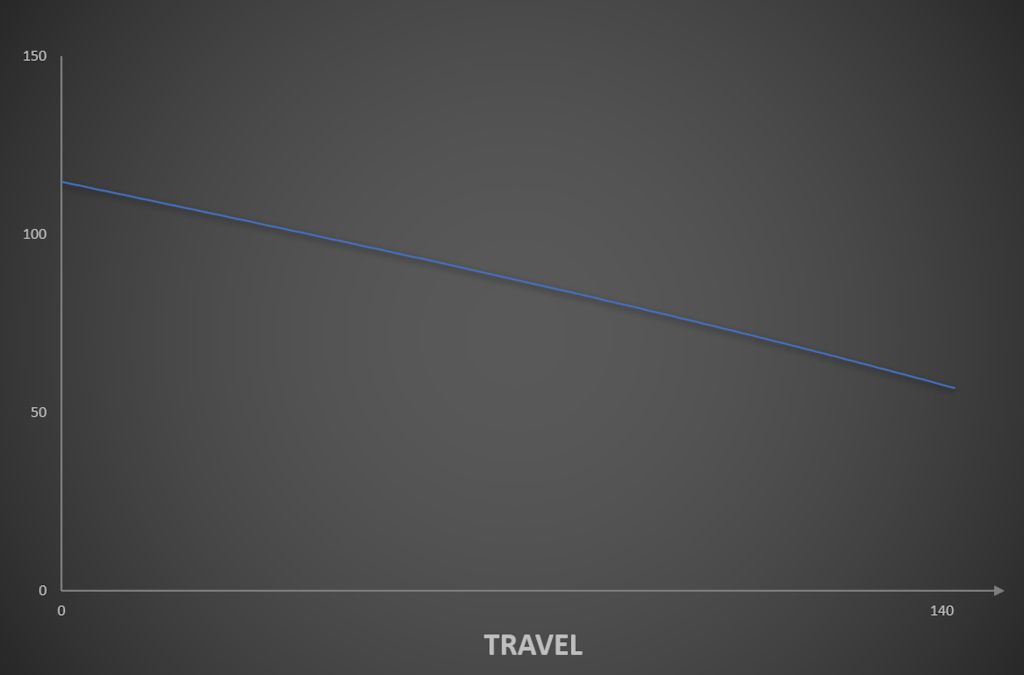
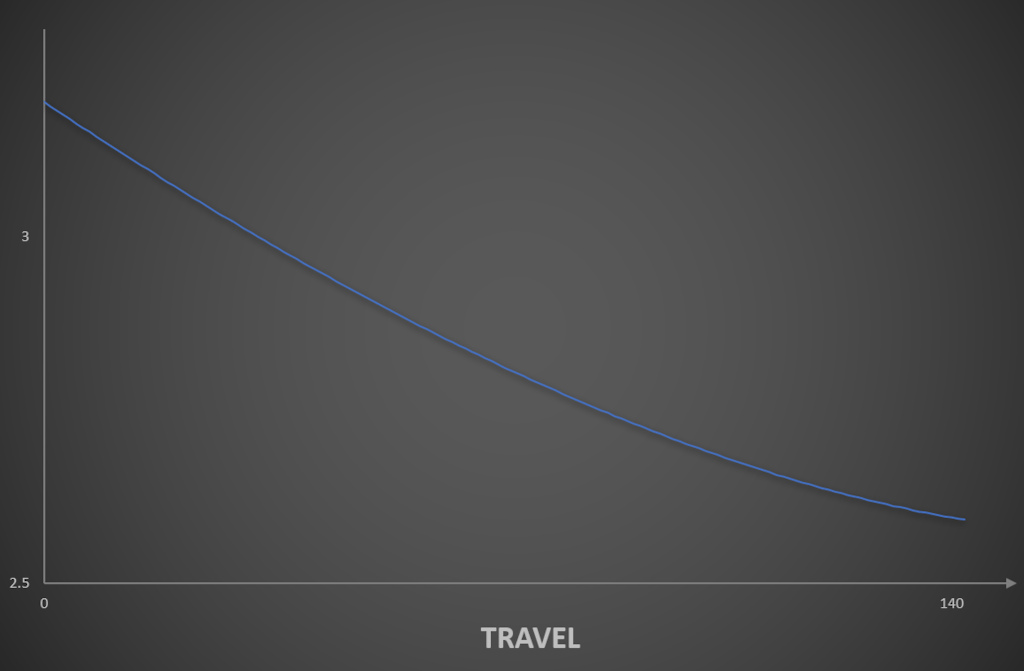






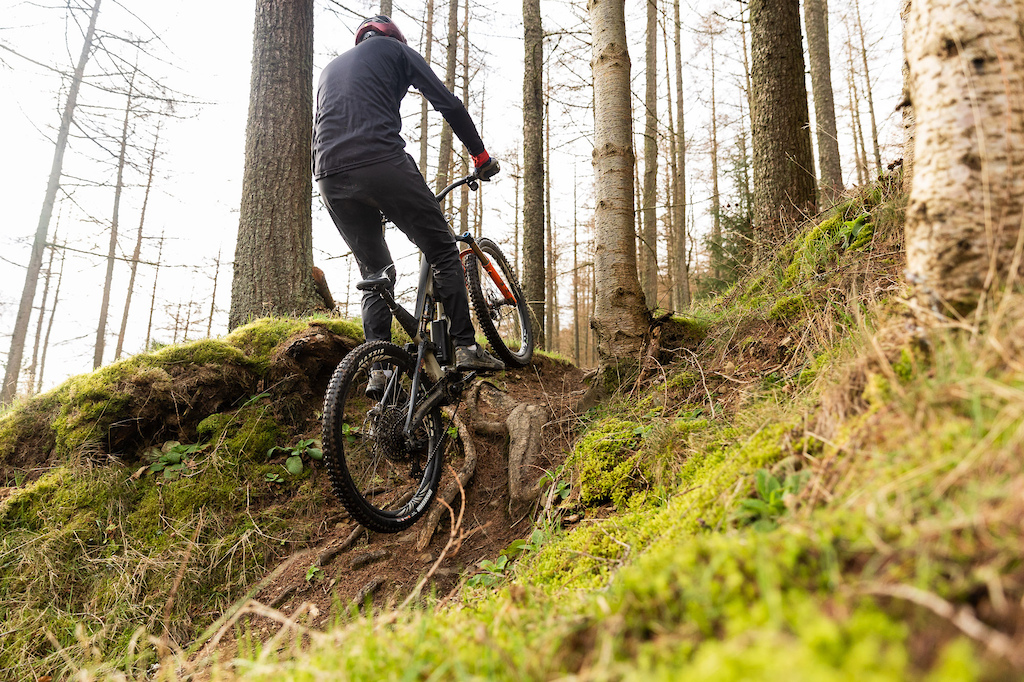



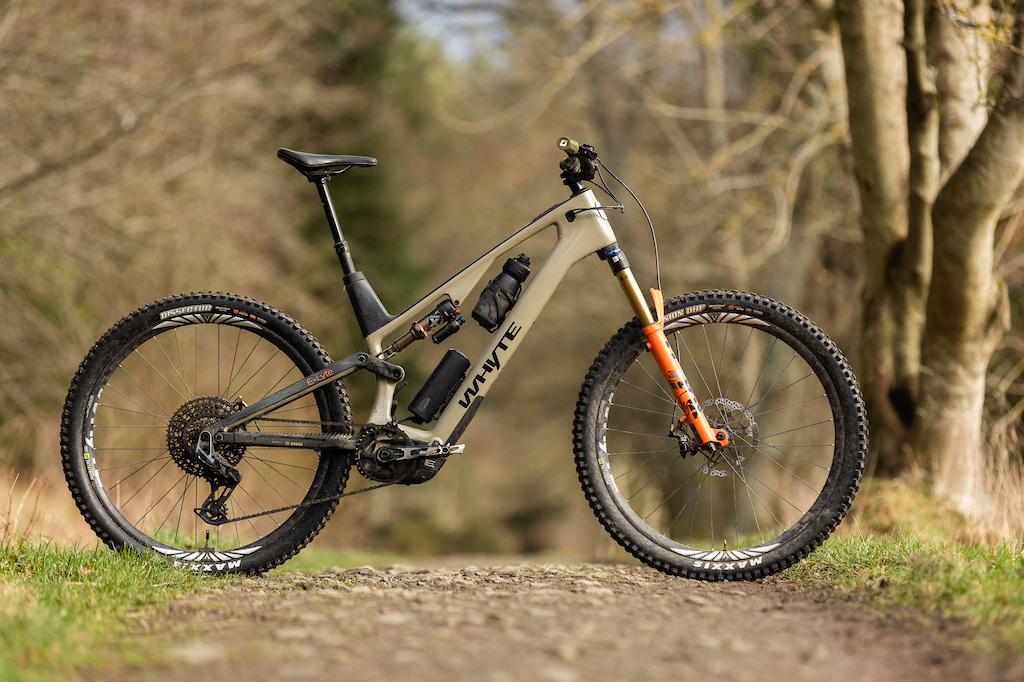
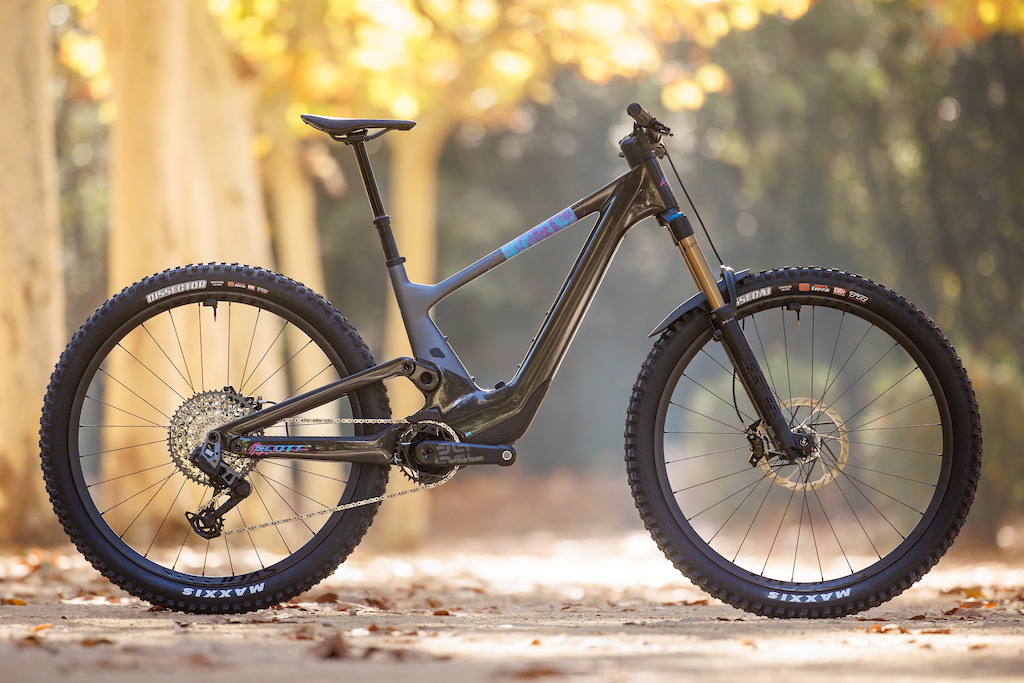




"Yeah, it's alwhyte."
As much as I like the theoretical modularity of bikes, that just seems like a basic amount of integration that should be there at that pricepoint..
Edit: Initially written before @seb-stott 's comment. That sucks that the reserve sometimes does not work. If I was a customer, I'd still prefer the convenience of charging everything through one battery and having to remember to turn the motor off at a small amount of battery to guarantee some spare power for the gears. But at least that explains their reasoning.
Did I mention am an engineer?
We live in a world of plenty, vast opportunity, and a wealth of choice. If this thing doesnt have all the bells and whistles you find important, its because the engineers/designers prioritized other things. You get that part right?
Like Whyte might not have all the resources that Spesh, or Trek might have, so in lieu of whatever connectivity gadget it is that the OP believes "should" be included at the price, they have done something else, like paid for R&D, or etc...
Everyone is perfectly aware that brands arrive at their product through their own set of priorities and that other options exist, I don't think we should need to write that down everytime..
The PB comment section is a perfect example of people thinking their "opinion" is the right one, and all others are to be disregarded.
I also dont for a second believe "most" people have a great understanding of anything regarding the bike industry, if they did, well we wouldnt see the comments that we do.
There is a wild sense of entitlement that manufacturers should be designing/building/ marketing things that individuals "believe" they want, and get pretty uppity (similar to your comment) when they dont.
The differences in the things that are created are what affords us to have the choice we do, I'm always baffled when people demand that those choices are limited.....
Seb provided a pretty clear explanation as to why they chose differently to your opinion, and once you had an explanation youre fine with it. The idea that you needed to have that before you softened is an example of that entitlement.
All e-bike batteries have a reserve to power a headlight... or accessory !!
As someone that owns a Kenevo SL yes you have to pedal to go up but i would hardly call it hard work. You need more than 27 miles of range? and that's without the range extender.
Honestly you are talking out of your rear.
One chain broke a few minutes after lightly tagging it on a rock step (probably pried an outer plate loose). I’m just pedaling along wondering, what’s that faint “ticking” noise? Then bam, chain breaks and rips my derailleur clean off.
Moral of the story, don’t ignore ticking noises, and e-bikes need bash guards too.
So Power(W) = Torque(Nm) x Angular Velocity(Rad/s)
600W = 55 Nm x (RPM x 2π / 60)
RPM = 600 x 60 / (55 x 2π)
or this
eicac.co.uk/power-rpm-and-torque-calculator
The bearings have been pretty good for me so far, but I think they use newer bearings than back in the day. Lifetime free replacement on pivot bearings too (although only tried that once so far).
The one thing I wish all eMTBs had was a standard charging port. Now that would be progress! USB-C anyone?? (joke!)
“ Whyte's lead engineer told me he runs a neutral bushing for in-between geometry, which might be a good compromise for all-round riding.”
But it doesn’t sound like a neutral bushing is shipped with the bike, which is odd, more so if the guy that designs the bike finds that the best compromise?
I realy don't understand, why producers puts such long chainstays to medium power bikes... there is no Turbo, or Boost mode for super steep climbing. And none of them are long travel, super enduro bike, where such long rear end would be usefull.
Dario and Seb are 6'3" though.
Its nice to have some representation for the taller folk, as many times bikes are "designed primarily" for the M/L size range. The XL's can sometimes ride quite a bit differently, and its nice to have someone who can bikes in those sizes.
But I agree, it can be "annoying" when you find a review of a bike you like, but in a size that was wildly different than what you're interested in. On the flip side though, I don't really think its realistic for them to have to test each bike in multiple sizes.
Often I look for reviews from other sites/people in that situation, to see if what I can glean from their reviews.
Been riding eBikes since 2016 and had 4 eMtbs in that time. Always gone for the 170+mm travel option and can't see why I wouldn't
IMHO bike like the Kenevo SL still make so much more sense.
I think it is an offset busing in the shock linkage (shape it link) like specialized use, you just flip it.
Lol, they do not provide a very similar ride to a comparable bike though. They have enduro pig weight, with a trail build. Zero use case.
Designed for gapers.